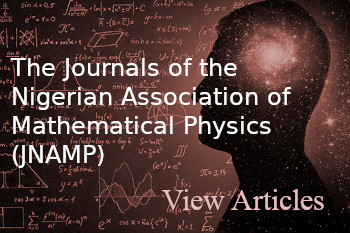MATHEMATICAL ANALYSIS OF PERFORMANCE MEASURES OF M/M/1 QUEUE MODELS.
DOI:
https://doi.org/10.60787/tnamp-19-125-134Keywords:
Queue, Customers, Arrival, Distributions, Waiting timesAbstract
The goal of this research is to expand existing single server queue models by deriving their performance measures through the application of probability laws. In this paper, we present a server queue model which consists of balking customers whose behaviours are characterised by discouragement and impatience during long queues. The averages number of such customers and response times of the queue system are being used to derive the average time customers have to wait and the number of customers who wait for service. Bayes law of total probability and Laplace-Stieltjes transforms are being applied to derive these parameters in single-server queue systems presented in this research. A numerical example is also presented to validate the model parameters. It is observed that, in order to evaluate the distribution of the response and waiting time, the distribution at the instant a customer joins it must be known. It is also observed that, the model distribution’s parameters from both the theoretical and numerical illustrations of the single server (M/M/1) with balking customers presented in this paper conform to the Little’s theorem on queues.
Downloads
References
Hiller, F.S, and Lierberman, G.J. (2010). Introduction to Operations Research. Irwin/McGraw-Hill
Ogumeyo S.A and Nwamara C.C. (2019).Derivation of A Finite Queue Model with Poisson Input and Exponential Service. Journal of the Nigerian Association of Mathematical Physics Volume 52 pp.53-58
Wagner, H.M. (2001). ‘Principles of Operations Research’ pp. 854-865. Prentice-Hall of India
Bronson R. and Naadimuthu (1997). Operations Research 2nd Edition, Schaum’s outline series, McGraw-Hill, New York
Subaagyo, P, Marwan, A. (1992) Operations Research, Yogakarta: BPFE
Kakaiy, T.J. (2004). DasarTeoriAntrianUntukKehidupanNyata. Yogyakarta: “Queue Models with Balking and Reneging”. Available online at https//doi.org/10.1051/ro/2019064.
Bohm, W. (2016) ‘A Course on Queuing Models’. Chapman and Hall/CRC.
Nugraha, Dedi, (2013). Penentuan Model System AntreanKendaran di GerbangTolBanyumanik, Skripsi, FSM, Statistika, UniversitasDiponegoro.
Kembe, M.M., Onah, E.S., Lorkegh, S.A., (2012). A Study of Waiting and Service Costs of a Multi-Server Queuing Model in a Specialist Hospital, International Journal of Scientific and Technology Research, 5(2): 2277-8616.
Bhat, U.N. (2005) ‘An introduction to Queuing Theory: Modeling and Analysis in Applications. Birkhauser.
Kobayashi, H (1978) ‘Modelling and Analysis’. An Introduction to System Performance Everluation Methodology. Addison-Wesley, Reading, MA.
Weber, T. (2019) Solving Performance Models Based on Basic Queuing Theory Formulas
Takagi, H. (1993) Queuing Analysis. A Foundation of Performance Evaluation. Vol.2. Finite systems. North-Holand, Amsterdam
Feller, W. (1968) “An Introduction to Probability Theory and its Applications” Vol. 1, 3rd Edition. New York: Wiley Inc.
Downloads
Published
Issue
Section
License
Copyright (c) 2024 The Transactions of the Nigerian Association of Mathematical Physics

This work is licensed under a Creative Commons Attribution-NonCommercial 4.0 International License.




